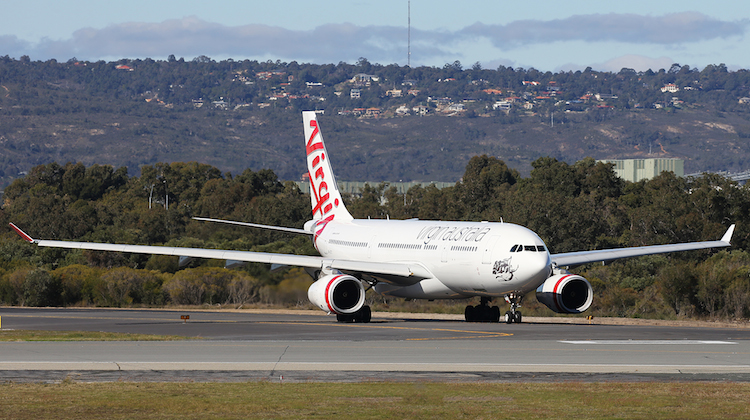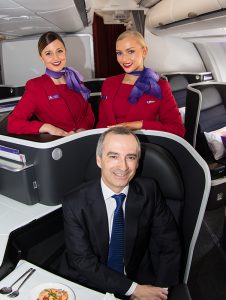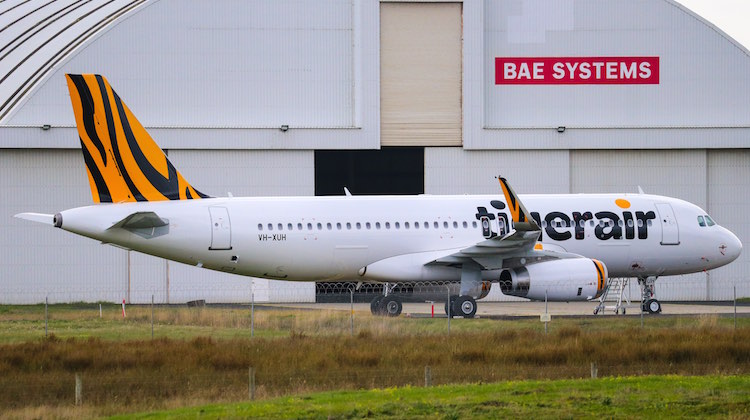
Virgin Australia says it is on track for a full year profit in 2015/16 after improved yields and lower costs moved the airline back into the black during the first quarter of the current financial year.
The company on Thursday reported statutory net profit after tax for the three months to September 30 2015 of $1.7 million, bouncing back into profitability following a $59.1 million statutory loss in the prior corresponding period.
Virgin said yields – or average airfares per passenger across both its Virgin and wholly-owned low-cost unit Tigerair Australia – increased in the quarter, compared with the prior year, while underlying cost per available seat kilometre excluding foreign exchange and fuel were lower.
“The group has achieved a significant turnaround in financial performance for the first quarter of the 2016 financial year,” Virgin chief executive John Borghetti said in a statement.
“This result reflects our continued success in driving revenue per available seat kilometre and yield growth, while controlling costs.
“Based on current market conditions, the Virgin Australia group is on track to return to profitability for the 2016 financial year and report a return on invested capital in line with its cost of capital.”

Underlying profit before tax, which the airline regarded as the best indicator of financial performance, came in at $8.5 million, compared with a $45 million underlying loss in the prior corresponding quarter.
Virgin said Tigerair had earnings before interest and tax (EBIT) of $400,000 in the first quarter of 2015/16, which was an improvement of $20.2 million from the prior year on a standalone basis. The company said the turnaround was led by “significant improvements in unit revenues and cost efficiencies”.
“Tigerair Australia has further improved performance, delivering its first profit for the September quarter,” Borghetti said.
Virgin has said previously Tigerair was expected to achieve full year profitability in 2015/16.
The release of financial results was also accompanied by Virgin’s first quarter operating statistics, which showed the airline carried fewer passengers and had fewer seats available for sale in both its domestic and international networks.
Virgin carried 4.28 million domestic passengers in the three months to September 30, down 4.2 per cent from the prior year. Meanwhile, the airline cut capacity measured by available seats 1.9 per cent, with available seat kilometres (ASK) down 0.7 per cent.
However, despite the reduction in capacity, load factors were down 2.5 percentage points at 74.7 per cent in the quarter.
It was a similar story on Virgin’s international network, with passenger numbers (down 3.4 per cent), available seats (down 4.1 per cent) and ASKs (down 4.3 per cent) all down on the prior year. However, load factors on Virgin’s international flying rose 1.7 percentage points to 84.8 per cent.
International capacity was likely to decline further over the rest of 2015/16 as Virgin exited the Perth-Phuket route in January 2016 and handed over its Perth-Bali, Adelaide-Bali and Melbourne-Bali services to Tigerair in March 2016.
There was however, passenger growth at Tigerair, with the low-cost carrier carrying 965,159 passengers in the quarter, 7.2 per cent improvement from the prior corresponding period. Revenue passenger kilometres were up 4.4 per cent, while the airline’s capacity growth, measured by ASKs, was 9.9 per cent.
With capacity growth running a bit ahead of passenger demand, Tigerair load factors fell 4.6 percentage points to 85.6 per cent.
There is likely to be ongoing capacity growth from Tigerair in the period ahead as a result of the previously mentioned start of international flights to Bali and given the airline recently took delivery of its 14th Airbus A320, to be based in Sydney.











